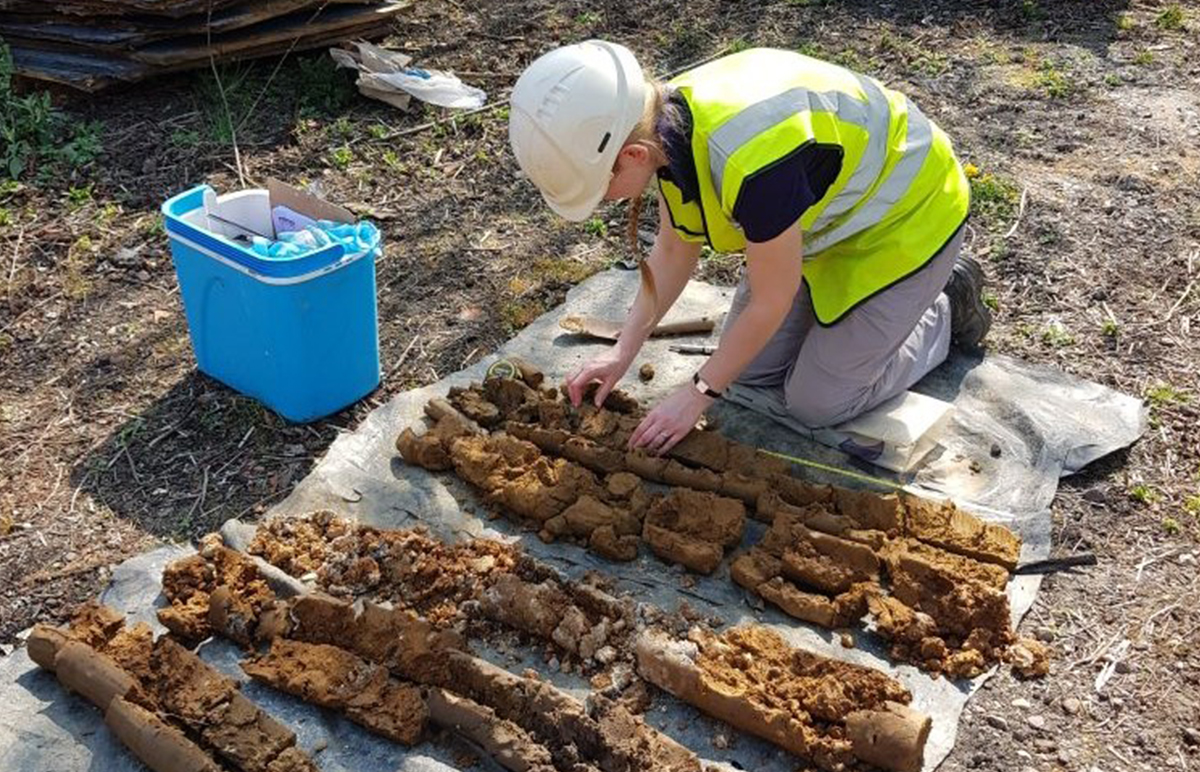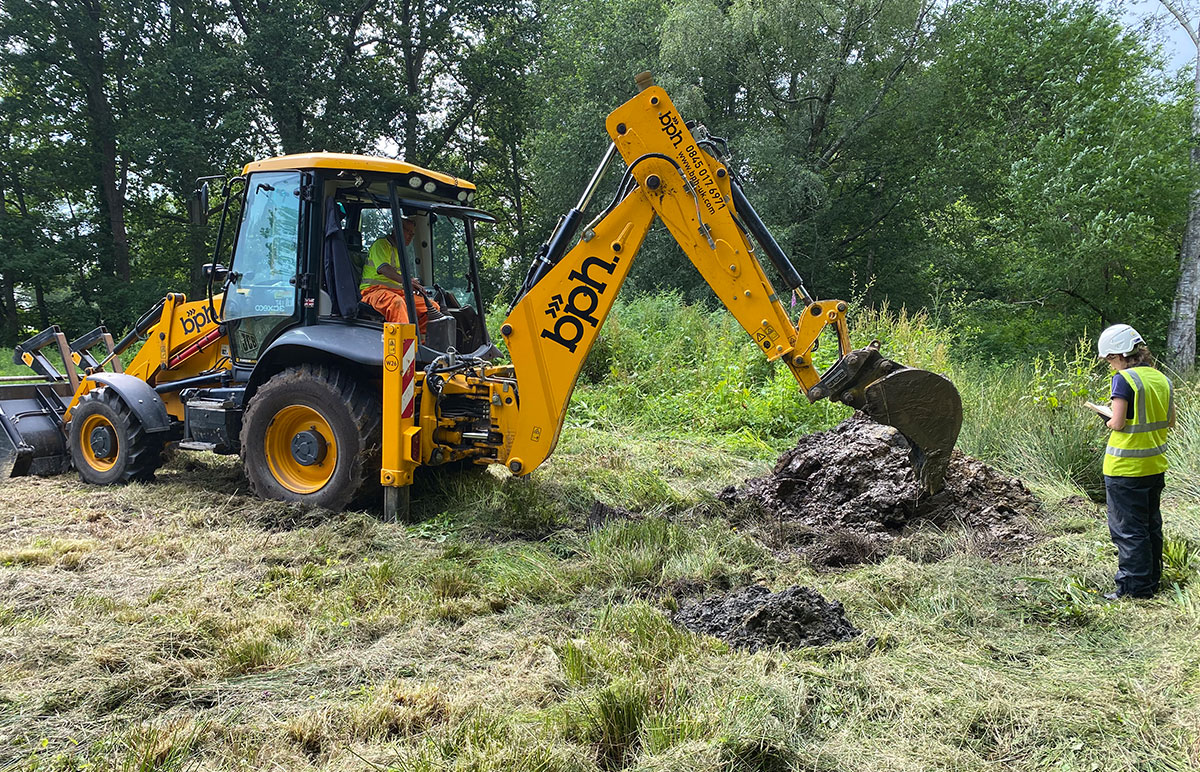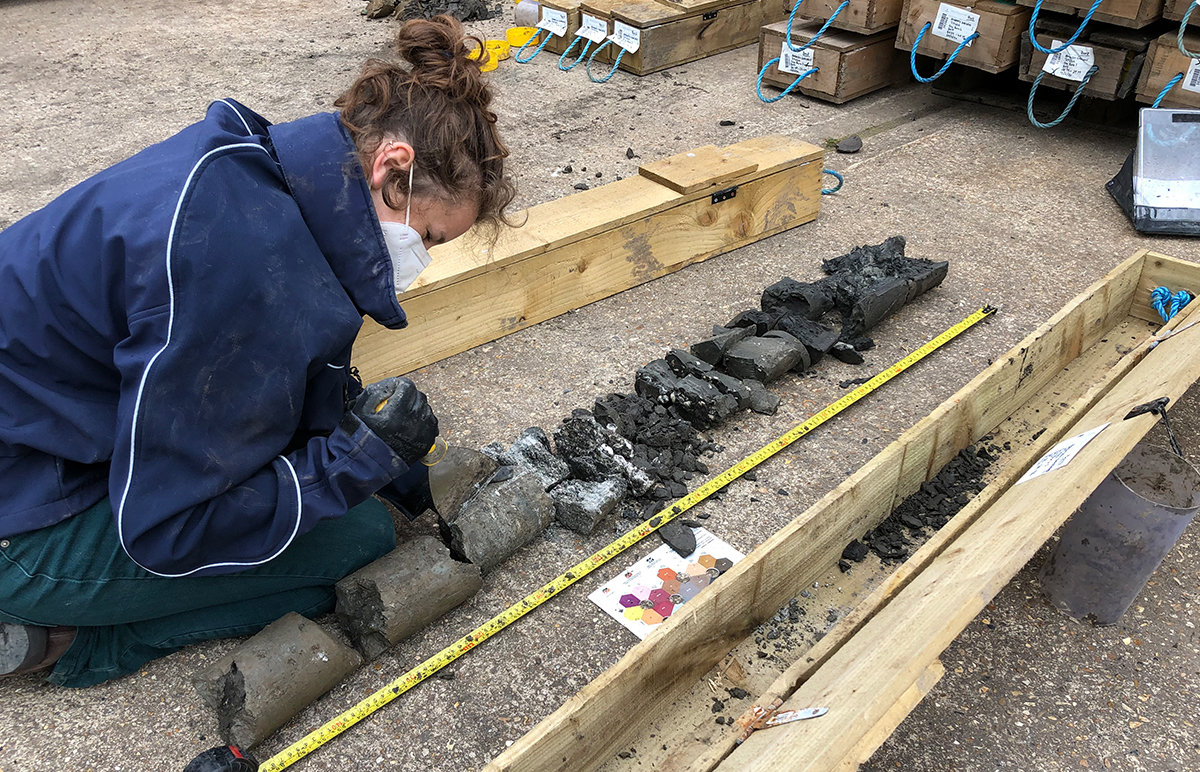
I have spent most of my career with small and medium sized ground investigation / geotechnical specialists, and one of the benefits of how we work has always been that the geotechnical engineer writing a report for us is the same engineer that was on site or in the lab logging the soil from the boreholes. On most projects we usually have some shallow sampling, using something like a window sampler or other drive-in sampler, or some trial pitting. This might be a couple of days work to provide good coverage and it makes sense to have a geotechnical engineer on site logging the boreholes and directing the work as information is gathered. Clearly if we are drilling say ten boreholes in a short timeframe we want to make sure they are put in the best locations, and that can only be achieved by having the engineer on site. With deeper boreholes, drilled using cable percussion or by rotary coring, where progress is slower, it is generally more practical to provide part-time supervision and to keep in touch with the lead driller by phone.
One of the unfortunate consequences of pressure on prices over the years has been the amount of field work that now appears to not be supervised by a geotechnical engineer or engineering geologist – we know this because (a) many ground investigation firms subcontract the same site crews, and they tell us, and (b) it is apparent from the poor quality of some of the borehole records we are asked to review. On a small ground investigation involving shallow sampling that might cost £5000, saving about 10% of that cost by not having an engineer on site full-time is likely to give the successful tenderer an edge. Once again this highlights the problem of cost vs value and how we sell our skills to a client, something I have discussed in a previous article: https://www.linkedin.com/pulse/invisible-geotechnical-engineering- steve-branch/

Whilst many lead drillers are very competent at logging soil, and provide excellent daily reports, that is not their primary role on the project and they should not be expected to provide the only log. I am sure that firms that don't provide engineer supervision will subsequently log samples in the laboratory to allow them to provide proper engineering descriptions, but they can never know what they have missed by not being on site and not directing the work.
One area in particular that seems to be a problem on small ground investigations is identification of desiccation. I have recently been involved in assessing remedial requirements for a quite severely cracked house in a prime residential area of North London on London Clay. An extensive ground investigation has been carried out by others, but only a factual report produced, with then some brief assessment of desiccation added. We know from historical records that a tree was removed from the site and that has almost certainly caused the movements, but the borehole records make no mention of desiccation, no roots are recorded on the logs and hand vane testing (which is useless in London Clay) has been carried out rather than pocket penetrometers (which are an excellent way of assessing desiccation in London Clay). The desiccation assessment has relied entirely on a comparison of measured moisture contents with plasticity indices, filter paper suction tests and swelling tests; on the basis of the lab testing it is concluded that desiccation might extend to 8 m, which would be an unprecedented depth. Faced with this conclusion we are advising our client that they need to carry out another investigation which, in view of the constrained access, is likely to cost around £10,000. This could have been avoided if a small proportion of that cost had been spent out on a properly supervised first investigation.
As with many aspects of ground engineering, desiccation requires a "multiple lines of evidence" approach, and it is essential that this starts with an experienced ground engineer actually seeing the soil as it comes out of the ground. In a soil like London Clay that is generally fairly consistent in composition in the upper levels, changes in colour and strength are very good first indicators of desiccation, as is the presence or otherwise of roots and rootlets. Relying solely on the results of laboratory testing is very difficult if the soils are not logged properly, especially as on many smaller sites it is not possible to find a location for a "control" borehole outside of the desiccated zone. Without a control borehole it is not possible to provide comparative data, which makes site logging all the more essential.

Recommendations for new and underpinned foundations on sites containing trees have often been based on National House-Building Council (NHBC) guidance, and there is a temptation to not make any judgment on depth of desiccation and to simply "hide behind" the NHBC guidance. This is not a wholly unreasonable approach, but if our summers continue to be as dry as 2022 we will need to be asking ourselves whether this is sufficient. and it will be more important than ever to have an engineer on site logging the soil as it is recovered.
As a client or specifier of ground investigation it is worth asking your preferred ground investigation specialist how they intend to carry out the work. Will they have an engineer on site logging the boreholes they drill, or pits they excavate, and how much experience does that engineer have? Will it be the same engineer logging the samples that writes the final report? If not, how is the work organised to make sure nothing is missed?
And always bear in mind that when a problem arises with the results of a ground investigation, it is far more common for the problem to be associated with what the investigation didn't find, than what it did.
Related News